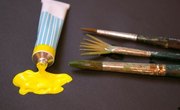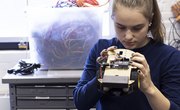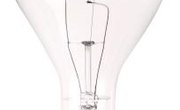For many high school students, finding topics for science projects can be challenging. For students with a creative bent, invention projects may prove an exciting alternative to ordinary research projects. High school invention projects may replicate existing inventions or invent completely new things from scratch. There are many fascinating invention projects that students can do in the school lab or their own homes.
Around the House
Some of the most popular appliances of all time are those made for the household. Inventions like the vacuum cleaner, the refrigerator and the microwave have made life easier for families around the world. There are still many household problems waiting for a new inventor to find a solution to. A household appliance invention project could identify a common problem in modern houses (e.g., slippery floors) and attempt to solve that problem (e.g., with special stick socks or a quick-drying floor cleaner). The student would use the scientific method of empirical observation and testing to figure out a common everyday problem in households and then use brainstorm several possible solutions. Students replicating existing inventions should pick an invention that is based on scientific theory, such as the light bulb, and then research the theory behind the invention thoroughly.
Computer Science
In this day and age, many high school students are more computer literate than their parents. At the high school level, some gifted students even possess skills in computer programming and information technology. For students with such interest, computer inventions such as software programs and computer games can make for a fun and fascinating science project. One possible computer invention project is to write a new program with c++ that helps teachers to design tests and assignments. In this case, the invention would be the program itself. Another possible invention project with computers involves writing a new program that asks questions about math or science. Such a program could be written using fairly elementary c++ or BASIC.
Electronics
Some of the most famous inventions of all time have been in the field of electronics. The light bulb, which has come to be an icon of modern inventing, is based on a simple electronic circuit and a light capturing shell. An invention project in electronics could replicate this or other inventions, or perhaps even devise an entirely new type of device. One popular invention project that has been done in electronics shows students how to create an electric circuit using a lemon as a power source. This project works by connecting the lemon to a switch and an electric device, using copper wire as a connector. An original invention involving lemon power could use lemons to power a device that has never been powered by lemons before, such as a handheld gaming machine.
Life Science
Many of the most exciting new inventions being made today are in chemistry and biology. Innovations in the life sciences are behind life-saving medical inventions, many of which have been derived from cross-bred or genetically modified plants. Because the subject can be studied with easily available materials, life science provides opportunities for totally new inventions. A high school student with basic biology knowledge could try to extract compounds from existing fertilizers (e.g., compost, commercial fertilizers) to create a newer and more potent fertilizer. If the compound the student creates is physically distinct, it qualifies as a new invention and can be patented.
Models
Making models allows students to exercise their creative muscles while learning about science. One classic model experiment is to have students use a baking soda and vinegar volcano to create a chemical reaction that produces interesting visual effects. At the high school level, students are capable of much more complex inventions than simple chemical reaction containers. One example of an invention that is appropriate for high school students is a model motor boat. The objective of this invention project would be for the student to create a new kind of motor for the boat. This may sound difficult, but it can be done with readily available objects like soda cans and straws. The lesson that students would learn from such an invention would be that it is possible to improvise and create functional devices with cheap materials.
Related Articles
References
Writer Bio
Based in St. John's, Canada, Andrew Button has been writing since 2008, covering politics, business and finance. He has contributed to newspapers and online magazines, including "The Evening Telegram" and cbc.ca. Button is pursuing a Bachelor of Arts in political science from Memorial University in St. John's.










